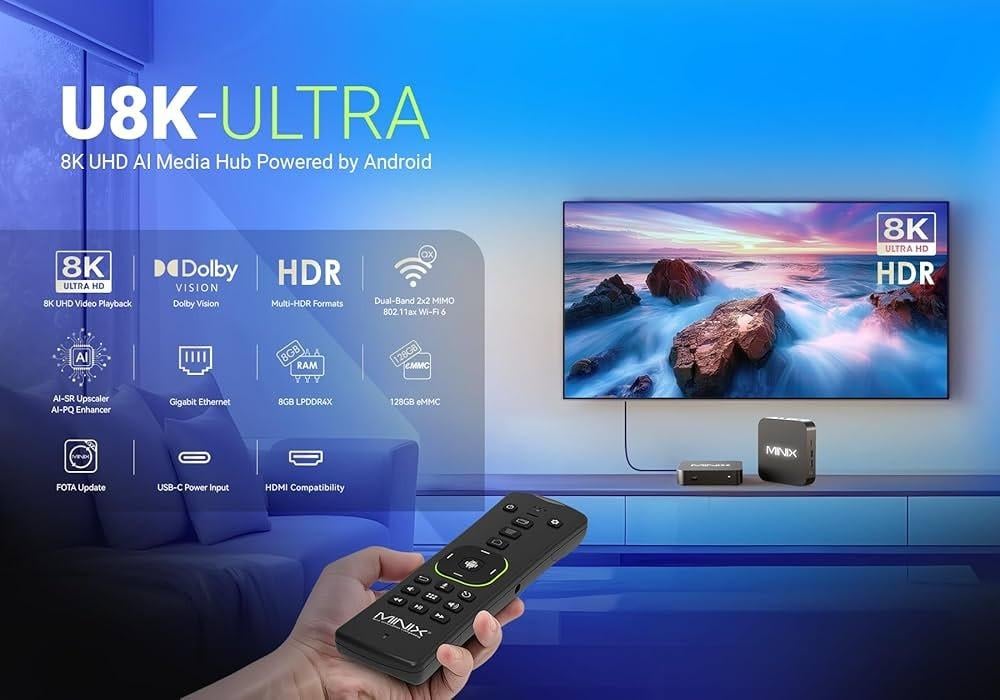When choosing TV receivers, we find options including 4K and 8K receivers, each with its own features and uses. Here is a detailed comparison between 4K and 8K receivers to understand the difference between them:
1. Resolution
- 4K Receiver:
- Provides 4K resolution at 3840 x 2160 pixels, meaning the image is sharper and more realistic than Full HD (1920 x 1080 pixels).
- 8K Receiver:
- Provides 8K resolution at 7680 x 4320 pixels, significantly enhancing image detail. 8K is considered quad resolution, resulting in a richer image, especially on large screens.
2. Content Availability
- 4K Receiver:
- There is a wide variety of content available in 4K resolution, including movies, TV shows, and games. Many services, such as Netflix, Amazon Prime, and YouTube, offer 4K content.
- 8K Receiver:
- Currently, the availability of 8K content is still limited. However, some streaming platforms have begun offering 8K content, but it's not as common as 4K content.
3. Price
- 4K Receiver:
- Generally, 4K receivers are less expensive than 8K receivers. They are the most popular choice for users looking for high quality without having to pay more.
- 8K Receiver:
- 8K receivers are more expensive, as they are newer technology and require hardware and components that support this resolution.
4. Viewing Experience
- 4K Receiver:
- They offer an excellent viewing experience on large screens with clear, crisp details, and are suitable for most everyday needs.
- 8K Receiver:
- Provides intense and highly accurate picture quality, making it ideal for users who care about capturing detail in their content. The benefit can be even more tangible when using very large screens.
5. Hardware Requirements
- 4K Receiver:
- Current devices may not require a major upgrade, as many modern displays support 4K resolution.
- 8K Receiver:
- You may need a display that fully supports 8K resolution to take full advantage of its capabilities, as well as high-rated HDMI cables to ensure fast and efficient data transfer.
Conclusion
Both 4K and 8K receivers have their advantages and disadvantages. A 4K receiver is the more practical option for most users due to the availability of content and its reasonable price, while an 8K receiver offers exceptional picture quality that can be suitable for users who want to take full advantage of technological advancements and future needs. Choosing one depends on the user's needs, budget, and the availability of the content they prefer to watch.

